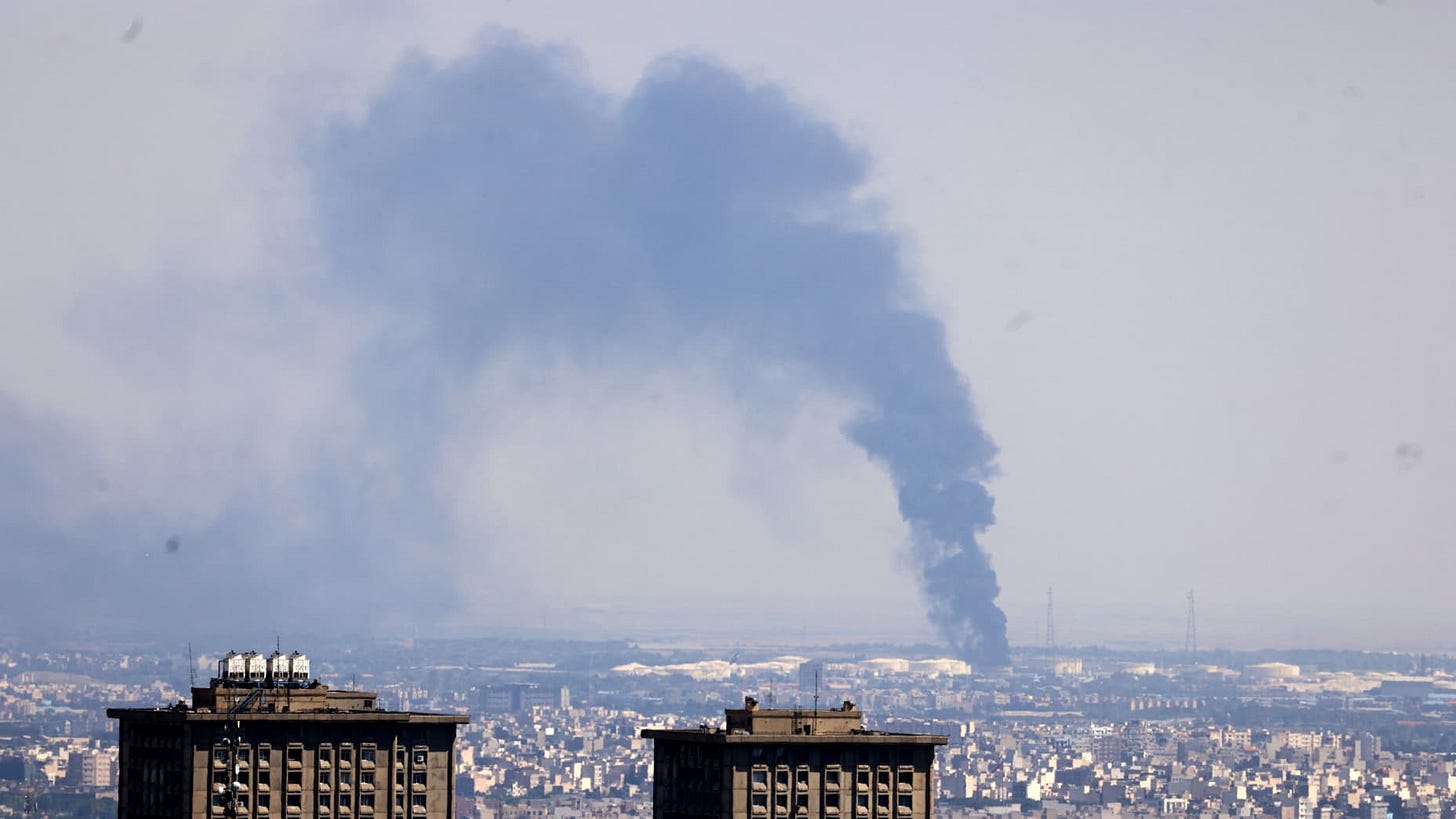A new oil crisis is brewing because of the Israel-Iran war
The Ghost of 1973 returns to haunt global energy markets.

From Past to Present
In the aftermath of the 1973 Yom Kippur War between Israel and Egypt and Syria, the Organization of the Petroleum Exporting Countries (OPEC) declared an embargo targeting Western states that aided the Jewish state.
Led by OPEC’s Arab members—such as Saudi Arabia, Iraq, and Kuwait—countries including the United States, the Netherlands, and Canada faced a surge in oil prices amid limited supply.
In what became a five-month-long crisis, oil prices rose from $3 to $12 per barrel. Gasoline prices increased by 40% in the U.S. alone, and several gas stations temporarily paused operations. The crisis became so severe that a federal national speed limit of 55 miles per hour was implemented to conserve fuel.
Although the crisis ended in March 1974 when the Arab participants lifted the embargo, it marked a turning point in global energy politics.
Recent events in the Middle East have recalled the legacy of the 1973 oil crisis.
The Israel-Iran Conflict
The Israel-Iran conflict continues into its seventh day, as the two states engage in tit-for-tat strikes.
As a result, the Strait of Hormuz—a strategic chokepoint adjacent to Iran and responsible for about 20% of global oil transit—has experienced a drop in shipping due to fears of maritime insecurity.
Furthermore, Al Jazeera reported a sudden spike in global oil prices following the initial Israeli attacks, rising from $70.40 on June 12 to $78.50 on June 13, the day of the first strikes.
Iran’s Oil Industry
Despite international sanctions limiting its involvement in the global oil market, Iran plays a pivotal role in the industry’s dynamics.
The country holds 12% of the world’s oil reserves, totaling approximately 157 billion barrels.
Iran, along with the U.S. and Russia, ranks among the top ten producers of oil and natural gas. Tehran produces roughly 3.99 million barrels of oil per day, accounting for 4% of the global total.
In natural gas, Iran produces approximately 9,361 billion cubic feet annually—6% of the world’s output.
Its numerous onshore and offshore oil fields and refineries are spread across the country, including several that border or are shared with Gulf states like Saudi Arabia. The most prominent, the Ahvaz Field, is one of the largest oil fields in the world.
Iran also hosts critical refineries such as the Abadan Refinery, which are essential for its domestic production and regional crude output.
The Growing Crisis
The escalating conflict between Tel Aviv and Tehran has sparked fears across the international oil market.
Israel has struck multiple Iranian energy facilities, including the Far Jam gas plant, Shahran oil depot, and South Pars gas field.
Given that these facilities are Iran’s economic lifelines amid mounting sanctions, the Islamic Republic is unlikely to take these strikes lightly.
This has been underscored by recent threats regarding the Strait of Hormuz. The state-controlled Islamic Republic of Iran News Network reported that Iran is considering closing the Strait in response to the attacks.
This wouldn’t be the first time the Strait has been at the center of conflict.
During the Iran-Iraq War in the 1980s, both Baghdad and Tehran targeted tankers passing through the Strait, in a period known as the "Tanker War." Although the Strait was never fully closed, the conflict severely disrupted shipping.
In 2019, four ships near the Strait off the coast of Fujairah, United Arab Emirates, were attacked. The U.S. accused Iran of orchestrating the assault, a claim Tehran denied.
While closing the Strait would not be taken lightly by the international community, historical precedent provides Tehran with justification to consider such a move.
Meanwhile, despite an April ceasefire with the U.S., Iranian-backed Houthi rebels in Yemen continue to attack ships in the Red Sea. The Houthis are likely to escalate these strikes in solidarity with Iran as its conflict with Israel intensifies.
This has already disrupted oil and gas companies that typically rely on the Red Sea corridor. If a second crisis emerges in the Strait of Hormuz, it could snowball into a much broader geoeconomic fallout.
Trade through the Red Sea has largely been rerouted around Africa, via Cape Town, South Africa. In contrast, there is no alternative sea route for Gulf shipping that passes through the Strait of Hormuz.
Historical Parallels and Global Stakes
An Iranian closure of the Strait would draw comparisons to events in 1967.
Amid rising tensions with Israel, Egypt closed the Straits of Tiran—a vital maritime route for Israeli shipping. Israel viewed the closure as an act of war and launched a preemptive strike against Egypt and its allies, triggering the Six-Day War.
Should Iran close the Strait of Hormuz, the U.S. and other Western nations would almost certainly retaliate. Former President Donald Trump has already suggested that the U.S. might enter the conflict between Israel and Iran. The closure of Hormuz would give Washington the rationale to do so.
At that point, the confrontation would no longer be a regional conflict—it would escalate into a global crisis with political and economic reverberations.




